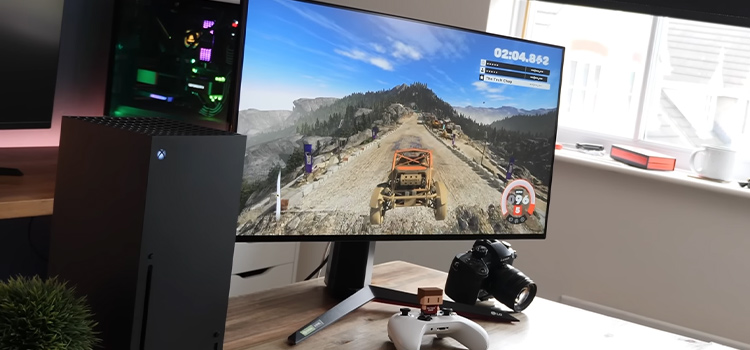How Far Does 5GHz Wi-Fi Reach? Unraveling Wireless Wonders
In the realm of wireless connectivity, not all frequencies are created equal. 5GHz Wi-Fi has risen as a popular choice for those seeking faster speeds, less interference, and a smoother online experience. But what about its range?
Short answer? 5GHz Wi-Fi generally has a shorter range compared to 2.4GHz due to its higher frequency. Typically, it can cover around 50 feet or 15 meters, but various factors can influence this.
Before you decide to jump on the 5GHz bandwagon or stick to your trusty 2.4GHz connection, let’s delve deeper into the range and influencing factors of 5GHz Wi-Fi.

What are the Functions of 5GHz Wi-Fi?
1. Frequency Differences and Their Impact
5GHz Wi-Fi operates at a higher frequency than 2.4GHz. While this means faster data rates and less interference, the higher frequency also translates to shorter wavelengths, which can reduce its overall range.
2. Less Crowded, But Shorter Reach
Given that fewer devices and appliances operate on the 5GHz band, there’s less interference. But the trade-off? A somewhat limited range compared to its 2.4GHz counterpart.
The Range of 5GHz Wi-Fi
When discussing the range of 5GHz Wi-Fi, there’s a difference between its theoretical and real-world reach.
Look at the table below first:
| Standard 5GHz | Theoretical Distance | Real-World Distance |
| 802.11a | 390 ft | 195 ft |
| 802.11ac | 820 ft | 410 ft |
| 802.11n | 460 ft | 230 ft |
Here, in this table,
802.11a is qn earlier Wi-Fi standard, introduced in 1999.
802.11ac is a more recent standard, known for faster speeds and improved range, introduced in 2013.
802.11n is introduced in 2009, it provided better signal range and increased speed over its predecessors.
Now, let’s explain the range fo 5GHz Wi-Fi.
1. Theoretical Range
In a perfect, obstruction-free environment, 5GHz Wi-Fi has a potential indoor range of up to 150 feet and an outdoor range stretching to about 300 feet or more. However, it’s rare for conditions to be perfect, especially indoors.
2. Real-world Range
Given common interferences like walls, electronic devices, and even people, the effective range of 5GHz Wi-Fi indoors can often be less than its theoretical maximum. In many homes, depending on the factors mentioned in the subsequent sections, you might find the range to be closer to 100 feet or even less in densely constructed areas.
Factors Influencing 5GHz Wi-Fi Range
Although 5GHz typically covers 50 feet or 15 meters, the range can vary to a great extent, depending on the factors mentioned below.
1. Physical Obstacles
Walls, floors, and other physical barriers can attenuate the 5GHz signal more than they would a 2.4GHz signal. The type and thickness of these barriers play a significant role.
2. Interference from Other Devices
While 5GHz is less prone to interference, certain devices or neighboring Wi-Fi networks can still impact its range.
3. Wi-Fi Hardware
The quality and design of the router, including its antenna type and the device’s capabilities, can influence the effective range of 5GHz Wi-Fi.
4. Environmental Factors
Factors like humidity, temperature, and even the layout of your home or office can affect the Wi-Fi signal’s propagation.
Tips For Maximizing Your 5GHz Wi-Fi’s Reach
- Strategic Router Placement: Avoid corners and basements. Central, elevated positions can optimize range.
- Use Range Extenders: These devices can amplify and extend the 5GHz signal, covering areas the primary router might miss.
- Regularly Update Router Firmware: Manufacturers often release updates that can enhance performance and range.
- Opt for Mesh WiFi Systems: These create a network of interconnected routers, ensuring seamless coverage across larger areas.
Range of 5GHz Compared to 2.4GHz
In wireless communication, the 5GHz and 2.4GHz bands emerge as the main contenders. While both have their merits, the difference in range between these frequencies often creates a point of contemplation for users.
5GHz:
- Higher Frequency, Shorter Wavelength: This nature of 5GHz makes it less efficient at penetrating barriers, affecting its range.
- Typical Range: In regular homes, its effective range could be around 100 feet indoors. The presence of walls or other obstructions can reduce this even further.
- Advantages: Its higher frequency allows faster data rates, which is great for activities requiring higher bandwidth like streaming and online gaming.
2.4GHz:
- Lower Frequency, Longer Wavelength: 2.4GHz, with its longer wavelength, is better at going through walls and obstacles, enhancing its range.
- Typical Range: It can stretch up to 200 feet or even more indoors, ideal for larger homes with multiple barriers.
- Drawbacks: It is more susceptible to interference since many devices (like microwaves and older cordless phones) operate on this frequency.
Wrapping It Up
The world of 5GHz Wi-Fi offers a blend of speedy connections with a somewhat limited embrace. While its reach might not be as extensive as 2.4GHz, its other benefits make it a worthy contender for many households and businesses. Remember, every space is unique, so it’s worth experimenting and adjusting to find that Wi-Fi sweet spot.
Questions Often Asked
- Is 5GHz Wi-Fi better for gaming or streaming?
Yes, 5GHz often offers faster speeds and reduced interference, making it suitable for activities like gaming or HD streaming.
- Can I use both 2.4GHz and 5GHz simultaneously?
Many modern routers offer dual-band functionality, allowing devices to switch between 2.4GHz and 5GHz based on range and requirements.
- Why might my device not see the 5GHz network?
Not all devices support 5GHz. It’s essential to ensure your device’s compatibility with the 5GHz band.
- How do I switch to 5GHz Wi-Fi?
If your router supports 5GHz, you can usually enable or select this band via the router’s settings or admin portal.
- Are there health concerns related to 5GHz Wi-Fi?
Current research suggests that Wi-Fi frequencies, including 5GHz, pose no significant health risks when used as intended.
Subscribe to our newsletter
& plug into
the world of technology





